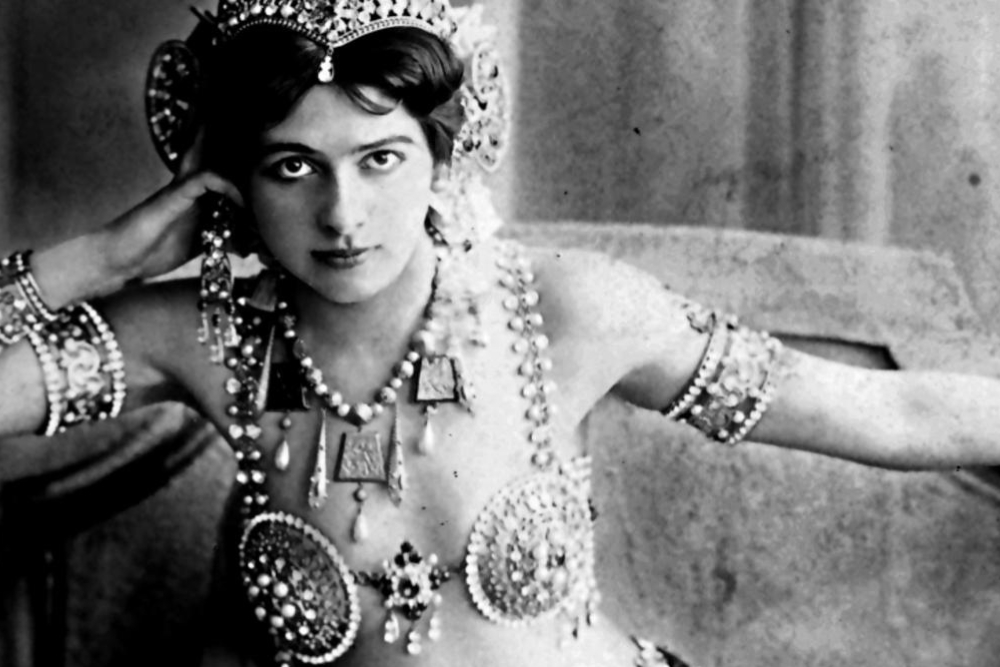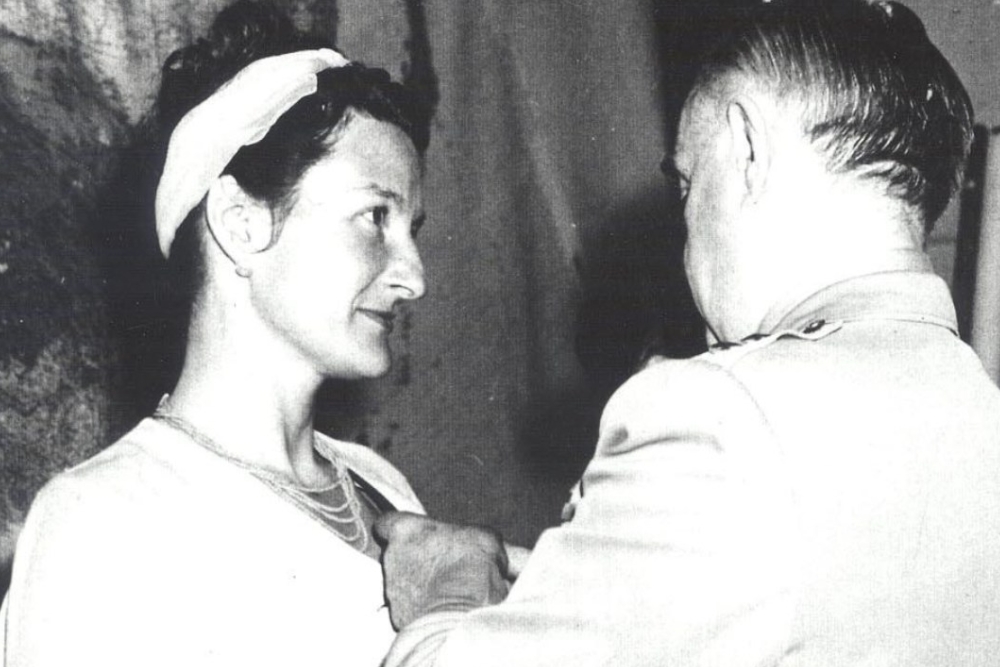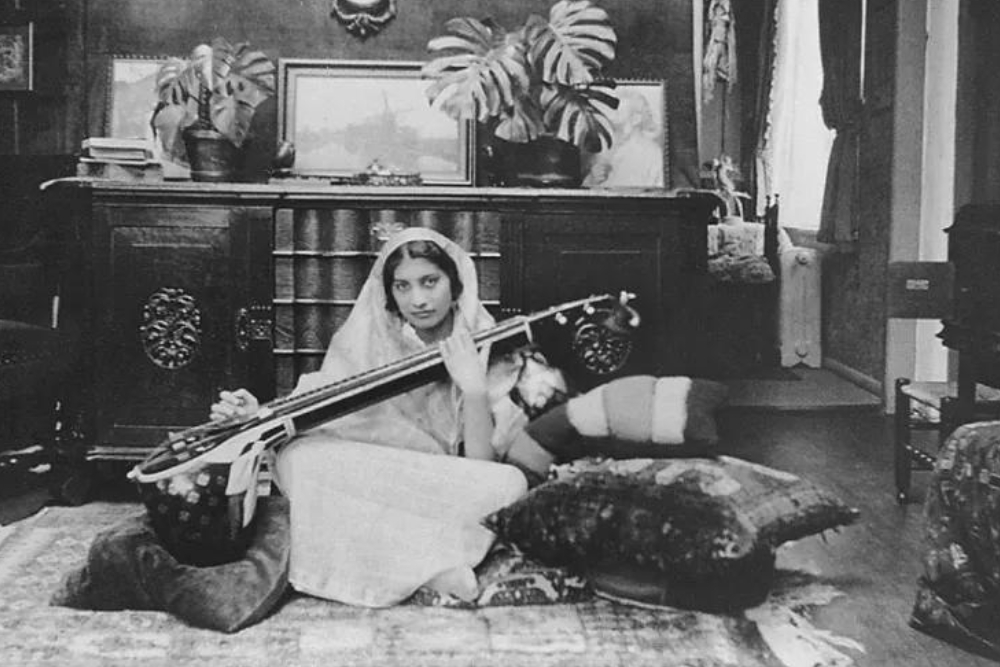Are you interested in history and espionage? Do you want to learn about history’s most known women spies and their stories? This article will explore the lives of some of the most famous women spies in history. From World War I to the Cold War, these women played a crucial role in espionage and intelligence gathering. We will delve into their stories, motivations, and impact on history. So, sit back, relax, and let’s dive into the world of espionage and intrigue.
Mata Hari – The Exotic Dancer Turned Spy

Mata Hari, born Margaretha Geertruida Zelle, was a Dutch exotic dancer and courtesan who became infamous for her alleged espionage activities during World War I. She was executed by the French for being a double agent, but her actual involvement in espionage remains unclear and has been a subject of debate for over a century.
Early Life and Career
Mata Hari was born on August 7, 1876, in Leeuwarden, Netherlands. She married a Dutch army captain, Rudolf MacLeod, and later divorced him. After her divorce, she moved to Paris and began her career as an exotic dancer, using the stage name Mata Hari.
Alleged Espionage Activities
Mata Hari’s alleged espionage activities began after she fell in love with Russian pilot Captain Vadim Maslov, who was serving alongside 50,000 other countrymen on the Western Front. She tried to visit him while he recuperated in a hospital near the frontlines, but he was later captured and executed by the Germans.
Mata Hari’s involvement in espionage is a matter of debate. Some sources claim that she was a double agent, while others argue that she was a convenient scapegoat for the French Army, which needed a culprit to blame for the deaths of 50,000 soldiers. The evidence against her has been called into question, and some believe that she was wrongfully convicted and executed.
Trial and Execution
Mata Hari was arrested in a luxury Paris hotel in February 1917 and put on trial on July 24, 1917. She was accused of spying for Germany and causing the deaths of thousands of soldiers. During her trial, she confessed to being a German spy, but some historians have questioned her confession. Mata Hari was executed by firing squad on October 15, 1917, at the age of 41.
Legacy
Mata Hari’s story has inspired numerous books, films, musicals, and other works, including Paulo Coelho’s recent novel “The Spy: A Novel of Mata Hari”. Her legacy as a femme fatale and a symbol of women’s danger and treacherous desires has endured despite the ongoing debate about her actual involvement in espionage.
Virginia Hall – The American Spy Who Became a Legend

Virginia Hall, born on April 6, 1906, in Baltimore, Maryland, was an exceptional American spy whose remarkable story and contributions during World War II have often been overlooked. Despite facing significant challenges, including the loss of her left leg in a hunting accident, she became one of the most effective and celebrated Allied agents in Nazi-occupied France.
Espionage and Resilience
Virginia Hall’s espionage career began when she joined the British Special Operations Executive (SOE) and was sent into Nazi-occupied France in 1941. Posing as a reporter for the New York Post, she established an extensive spy network and provided vital intelligence to the Allies. Her ability to change her appearance and use multiple aliases made her a formidable and elusive figure, earning her the nickname “the most dangerous of all Allied spies” by the Nazis.
Distinguished Service and Legacy
Hall’s exceptional contributions were recognized with the Distinguished Service Cross, making her the only civilian woman to receive this honor during World War II. Her legacy as a pioneering female spy and her extraordinary bravery in the face of adversity have been celebrated in various books and historical accounts. In 2019, she was inducted into the Maryland Women’s Hall of Fame, and a CIA field agent training facility was named the Virginia Hall Expeditionary Center in her honor.
Post-War Career
After the war, Virginia Hall joined the newly formed Central Intelligence Agency (CIA) and continued her service in the intelligence community. Her resilience, determination, and exceptional achievements have made her a symbol of courage and inspiration, demonstrating the significant impact of her work in the fight against tyranny and oppression.
Virginia Hall’s story is a testament to the power of determination and resilience in the face of adversity. Her remarkable achievements as an American spy during World War II have rightfully earned her a place among the most revered and celebrated figures in the history of espionage and wartime resistance.
Noor Inayat Khan – The Indian Princess Who Fought Against the Nazis

Noor Inayat Khan, a descendant of Tipu Sultan, an 18th-century Muslim ruler of Mysore, was an Indian princess who made significant contributions as a spy for the British during World War II. She was born on January 1, 1914, in Moscow, Russia, to a prominent Sufi preacher, Hazrat Inayat Khan, and an American, Ora Ray Baker. Noor’s remarkable story of bravery and sacrifice has gained recognition through various media and historical accounts.
Espionage and Sacrifice
Noor was trained by the Special Operations Executive (SOE) in covert warfare and spycraft, becoming the first female radio operator to be sent into Nazi-occupied France. Despite the constant danger and the risk of capture, she provided crucial aid to the Allied war effort and its fight against Nazi Germany. Noor’s unwavering commitment to her mission was evident when, after being captured by the Gestapo, she refused to divulge secrets about the radio transmission program and the identities of her fellow agents.
Tragic End and Legacy
Noor’s capture led to her brutal torture and eventual execution at the Dachau concentration camp on September 13, 1944. She was posthumously awarded Britain’s highest civilian honor, the George Cross, and France bestowed upon her the Croix de Guerre. Noor’s story of courage and sacrifice has been the subject of various literary and cinematic works, shedding light on her extraordinary contributions to the war effort and her indomitable spirit in the face of adversity.
Noor Inayat Khan’s legacy as a symbol of courage and resistance inspires people worldwide. Her story serves as a poignant reminder of the extraordinary sacrifices made by individuals during one of the darkest periods in human history.
Ethel Rosenberg – The American Spy Who Paid the Ultimate Price

Ethel Rosenberg was an American who, along with her husband Julius Rosenberg, was accused of espionage during the Cold War. They were convicted of passing atomic secrets to the Soviet Union and were executed on June 19, 1953.
The case against Ethel and Julius Rosenberg has been the subject of ongoing debate and controversy. While Julius was accused of passing on information to the Russians about certain US weapons, there is no evidence that Ethel was directly involved in espionage or had access to classified information.
The evidence against Ethel has been called into question, and there have been growing calls for her exoneration, with some arguing that she was wrongfully convicted and executed. The case of the Rosenbergs remains a significant and contentious chapter in the history of the Cold War and the anti-communist sentiments of the time.
Nancy Wake – The White Mouse Who Fought Against the Nazis

Nancy Wake, also known as the “White Mouse,” was a remarkable figure in the history of espionage and the French Resistance during World War II. Born on August 30, 1912, in Wellington, New Zealand, she later became a prominent leader and saboteur in the fight against the Nazi occupation of France. Wake’s courageous and daring undercover activities have made her one of World War II’s most celebrated and decorated heroines.
Early Life and Entry into Espionage
Nancy Wake’s journey into espionage began when she witnessed the brutality of the Nazi regime as a journalist in Paris. This experience led her to join the French Resistance in 1940, where she initially worked as a courier, helping Jewish people and Allied servicemen escape from the occupied territory. Her network’s success and her bravery in the face of constant danger led to the Gestapo giving her the codename “White Mouse”.
Role in the French Resistance
Wake’s involvement in the French Resistance expanded as she became a key figure in organizing parachute drops of arms and equipment and working with the Maquis, the guerrilla resistance army in France. She was known for her fearlessness and strategic brilliance, leading successful raids on German installations and the Gestapo headquarters in Montluçon. Her efforts in the Resistance were instrumental in weakening the German forces in the region, and she was involved in combat with the enemy troops sent to destroy the Maquis.
Gestapo’s Most Wanted Spy
Due to her significant impact on the German occupation forces, Wake became the Gestapo’s number one most-wanted individual, with a substantial bounty on her head. Her ability to evade capture and her audacious actions against the enemy made her a legendary figure in the annals of espionage. Her resilience and determination in the face of constant danger and the loss of her husband, who was captured, tortured, and executed by the Gestapo, further exemplify her extraordinary courage and commitment to the cause of freedom.
Post-War and Legacy
After the war, numerous awards and decorations recognized Nancy Wake’s remarkable contributions to the Allied victory, including the Légion d’honneur, the Croix de Guerre, and the George Medal. She returned to Australia following the war and lived a long and eventful life, passing away on August 7, 2011, in London, England. Her legacy as one of World War II’s most famous and decorated spies endures, serving as an inspiration for future generations and a testament to the indomitable spirit of those who resist tyranny and oppression.
Conclusion
In conclusion, the stories of these women spies are a testament to the power of courage, determination, and sacrifice. From Mata Hari to Nancy Wake, these women played a crucial role in espionage and intelligence gathering, and their impact on history cannot be overstated. Their stories are a reminder of the importance of standing up for what is right, even in the face of danger, and the power of the human spirit to overcome adversity.


